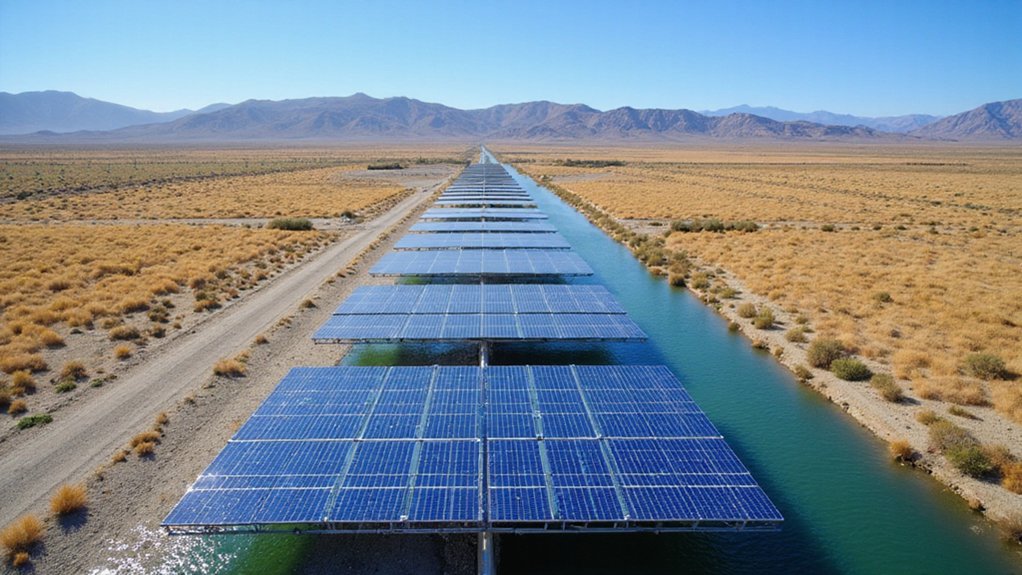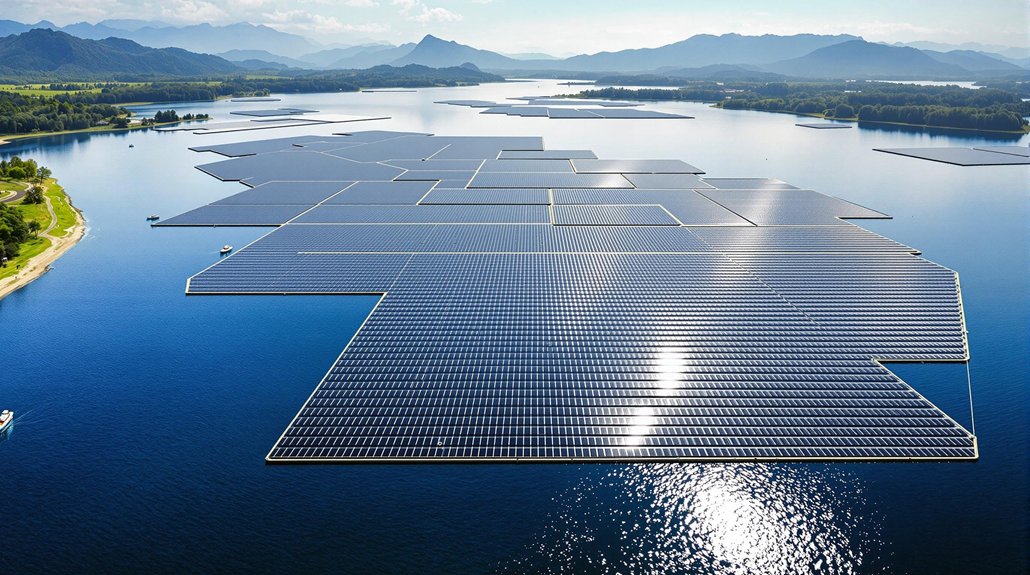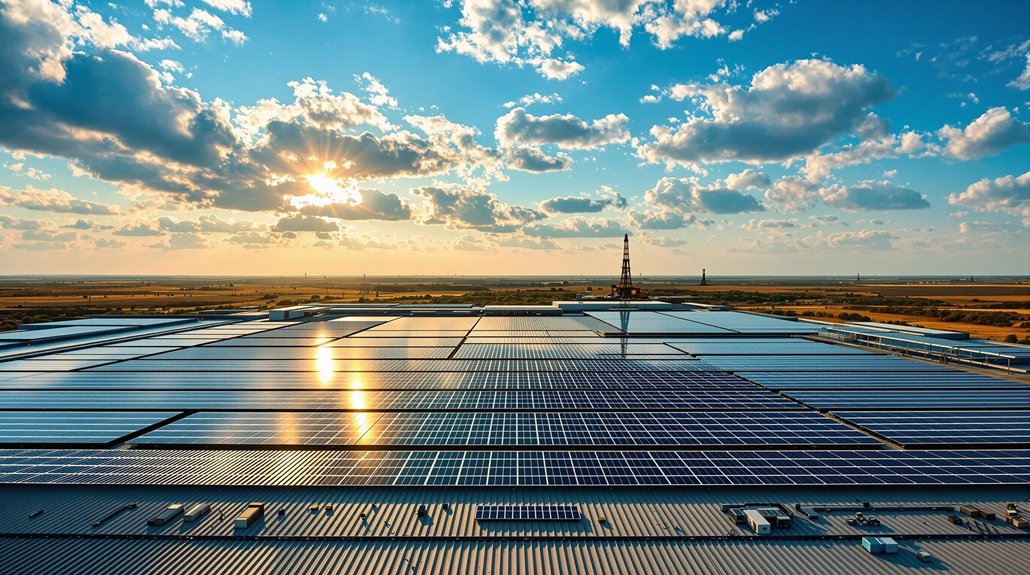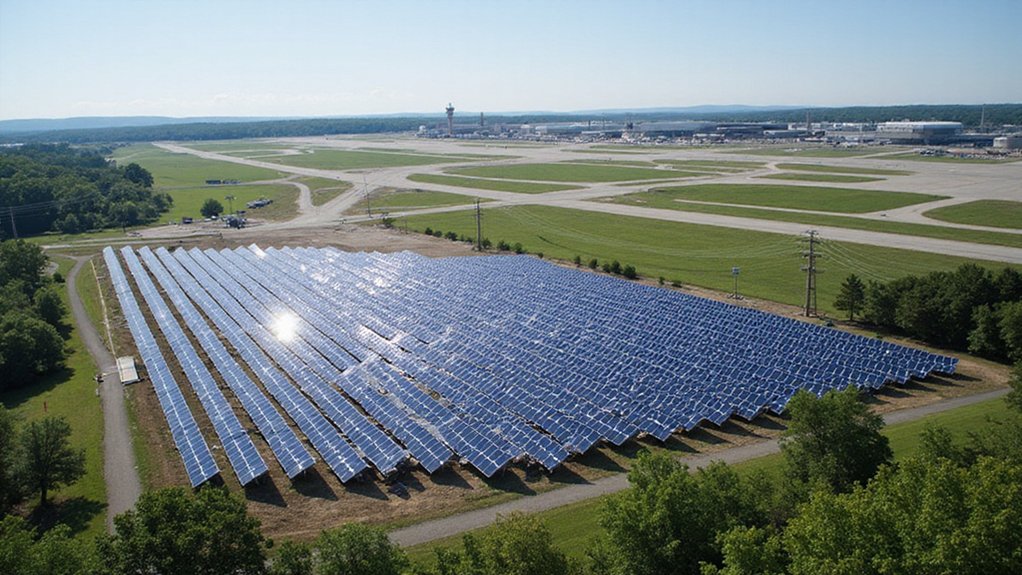California is installing solar panels over its 4,000 miles of water canals. This innovative project generates clean electricity while reducing water evaporation by up to 50%. The panels could produce enough power for 2 million homes and save 63 billion gallons of water annually. The $20 million initiative also preserves 50,000 acres of land that would otherwise be needed for ground-mounted solar farms. The benefits extend beyond energy production.
As California faces ongoing water shortages and growing energy demands, an innovative solution is taking shape above the state’s extensive canal system. Engineers are installing solar panels directly over water canals, creating a dual-purpose system that generates clean electricity while reducing water evaporation.
The ambitious project could transform California’s 4,000 miles of canals into renewable energy corridors. Studies show covering these waterways with solar panels could generate up to 13 gigawatts of electricity annually – enough to power roughly 10 million homes. At current pilot scales, the panels could supply electricity to about 2 million homes each year.
California’s canal-solar initiative could create an energy lifeline along 4,000 miles of waterways while addressing critical resource challenges.
Water conservation is another major benefit. The panels shade the water below, reducing evaporation by up to 50%. This could preserve enough water annually to meet the needs of 2 million households. In Arizona, a similar project by the Gila River Indian Community has already demonstrated this 50% reduction in water loss.
The solar-over-canal approach also saves valuable land. By using existing canal infrastructure, the project could preserve approximately 50,000 acres of productive agricultural land that would otherwise be needed for ground-mounted solar farms. This helps protect rural spaces and natural habitats.
To test the concept, California has launched Project Nexus in Merced County with $20 million in state funding. The pilot involves the Turlock Irrigation District, Solar AquaGrid, and researchers from the University of California, Merced. They’re testing performance on canals ranging from 20 to 110 feet wide. These efforts are part of a broader initiative that could help prevent the loss of 63 billion gallons of water annually through reduced evaporation.
Beyond energy and water savings, the project offers environmental benefits. The shade reduces algae and weed growth, lowering maintenance needs. The clean energy helps reduce air pollution from fossil fuels. Initiative researchers have found that solar panels over water can achieve enhanced efficiency due to the cooling effect from the canal water. With a 25-30 year lifespan, these solar installations represent a long-term solution for California’s energy and water challenges. The initiative also creates new jobs in solar installation, maintenance, and engineering.
California needs to add about 6 gigawatts of solar capacity annually to meet its renewable energy targets. These canal-top systems could help the state reach these goals while addressing water scarcity – turning existing infrastructure into a multifunctional climate solution.
References
- https://publicexchange.usc.edu/csci/
- https://www.solarpowerworldonline.com/2025/03/seven-top-research-universities-kick-off-california-solar-canal-initiative/
- https://today.usc.edu/solar-canals-a-bright-solution-for-californias-water-and-energy-needs/
- https://acoel.org/california-dreaming-is-becoming-a-reality/
- https://www.ecoticias.com/en/6400-km-covered-solar-13-gw-energy/13069/









